
The 26 cantons of Switzerland are the member states of the Swiss Confederation. The nucleus of the Swiss Confederacy in the form of the first three confederate allies used to be referred to as the Waldstätte. Two important periods in the development of the Old Swiss Confederacy are summarized by the terms Acht Orte and Dreizehn Orte.

The canton of Solothurn or canton of Soleure is a canton of Switzerland. It is located in the northwest of Switzerland. The capital is Solothurn.
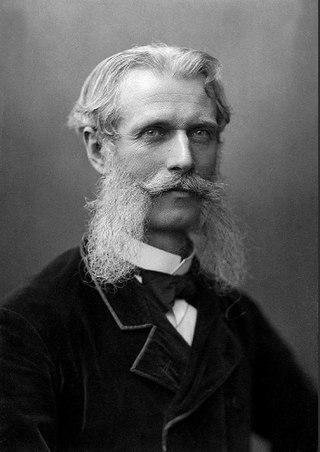
Carl Andreas Hilty was a Swiss lawyer, professor of constitutional law, politician, philosopher, lay theologian and writer.
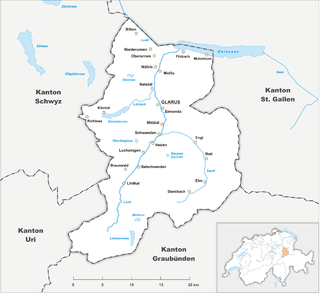
The canton of Glarus is a canton in east central Switzerland. The capital is Glarus. The population speaks a variety of Alemannic German. The majority of the population (81%) identifies as Christian, about evenly split between Protestants and Catholics.
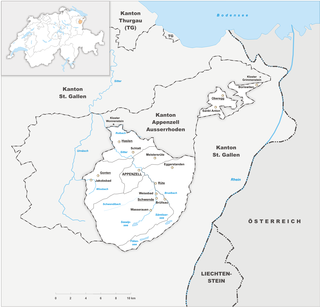
Appenzell Innerrhoden, in English sometimes Appenzell Inner-Rhodes, is one of the 26 cantons forming the Swiss Confederation. It is composed of six districts. The seat of the government and parliament is Appenzell. It is traditionally considered a "half-canton", the other half being Appenzell Ausserrhoden.

Appenzell Ausserrhoden, in English sometimes Appenzell Outer Rhodes, is one of the 26 cantons forming the Swiss Confederation. It is composed of twenty municipalities. The seat of the government and parliament is Herisau, and the seat of judicial authorities are in Trogen. It is traditionally considered a "half-canton", the other half being Appenzell Innerrhoden.

The canton of St. Gallen or St Gall is a canton of Switzerland. The capital is St. Gallen.

Thurgau, anglicized as Thurgovia, more formally the Canton of Thurgau, is one of the 26 cantons forming the Swiss Confederation. It is composed of five districts and its capital is Frauenfeld.
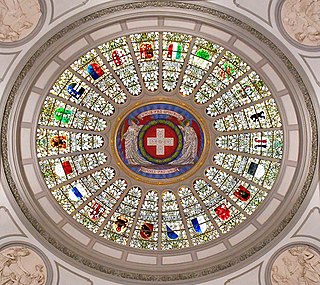
Each of the 26 modern cantons of Switzerland has an official flag and a coat of arms. The history of development of these designs spans the 13th to the 20th centuries.

Englisberg is a village in the district of Seftigen in Canton Bern, Switzerland. On January 1, 2004, the independent municipality merged with Zimmerwald to form the new municipality of Wald BE. Situated on the Längenberg, above the valley of the Aare river, it combines the villages of Englisberg and Kühlewil. Englisberg is first documented in 1166 [Endlisperc]. It is believed that Englisberg was created out of the much older village of Kühlewil [Cullenwil, Cullenwilare - originally of Celtic origin] the latter of which having since attained the status of a hamlet of the former. In the 14th century a castle is documented in Englisberg, owned by the family of the same name. It was abandoned by the following 15th century and quickly fell into disrepair and disintegration. The feudal rights over Englisberg were acquired by the von Erlach family of Bern in 1433 and passed in 1542 to the Baumgartner family of the same place. After 1570, these feudal rights were sold to local farming families Guggisberg and Zimmermann which over the course of several generations were split into 70 shares. In the 18th century, these rights were successively purchased by the aristocratic von Graffenried and von Tscharner families seated at the Lohn estate in Kehrsatz only to lose it all when Switzerland was invaded by the French in 1798 that resulted in the abolishment of the ancient order. Englisberg belonged until 1798 to the high court district of Seftigen. Ecclesiastically Englisberg was part of the evangelical reformed parish church of neighboring Belp till 1699 and thereafter was integrated into the newly created parish of Zimmerwald.

Säntis was the name of a canton of the Helvetic Republic from 1798 to 1803, consisting of the territory of St. Gallen, Appenzell, and Rheintal. Its capital was St. Gallen.
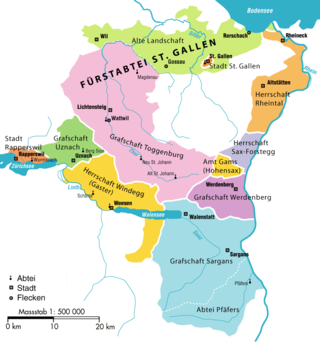
Pfäfers Abbey, also known as St. Pirminsberg from its position on a mountain, was a Benedictine monastery in Pfäfers near Bad Ragaz, in the canton of St. Gallen, Switzerland.
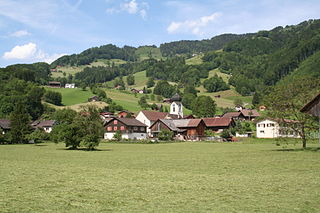
Schänis is a municipality in the Wahlkreis (constituency) of See-Gaster in the canton of St. Gallen in Switzerland.
See-Gaster is a constituency (Wahlkreis) in the canton of St. Gallen in Switzerland. The Wahlkreis has been established on June 10, 2001, with an area of 246.16 km2 (95.04 sq mi).

The United Swiss Railways was a former railway company in Switzerland. It was the smallest of the five main railways that were nationalised from 1902 to form the Swiss Federal Railways.

Staatsarchiv Zürich, formally the Staatsarchiv des Kantons Zürich, are the state archives of the Swiss Canton of Zürich and its legal predecessors, in particular the former city republic of Zürich.
The following is a timeline of the history of the municipality of Bern, Switzerland.

Johannes Dierauer was a Swiss historian and librarian. He taught history classes at the Cantonal School in St. Gallen from 1868 to 1907 and, from 1874 to 1920, served as the head of the City Library of St. Gallen.

In der Maur is an ancient Swiss family. Throughout the Middle Ages and Renaissance, the family held positions of political and economic power as members of the bourgeoisie in Berneck, St. Gallen and as members of the lower nobility in Kurtatsch an der Weinstraße. The In der Maur von Berneck family were first granted a coat of arms in 1478, when Hermann In der Maur was appointed as the Ammann of the Abbot of St. Gallen of Berneck— a position the family continued to hold throughout the reigns of the Prince-Abbots of the Abbey of Saint Gall within the Holy Roman Empire. Members of the family also served as Imperial tax collectors and as clerks of the Court of Berneck. The first member of the family to hold the position of Ammann in Berneck was Ulrich In der Maur in 1435.

The S5 is a railway service of the St. Gallen S-Bahn that provides hourly or better service between Weinfelden and St. Margrethen, in the Swiss cantons of St. Gallen and Thurgau. THURBO, a joint venture of Swiss Federal Railways and the canton of Thurgau, operates the service.






















